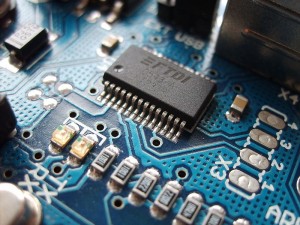Roblog is a weekly column dedicated to understanding the world of robotics. If science fiction comes true and an impending robot apocalypse is real, it can’t hurt to be prepared. Come back every Thursday for a new blog of robot rants.
The most well-known names in technology are also some of the highest-grossing. Apple, Google, Samsung, and their contemporaries bring in tens of billions of dollars in revenue each year. These technology giants, however, were built on the backs of humble projects, worked on in late-night basement sessions all over the world. This type of software, open and available for anyone to improve, helped create much of the technology we know today and is continuing to do so today in creative ways.
Open source software (OSS) is software whose source code available so anyone has the “rights to study, change and distribute the software to anyone and for any purpose.” The open source software movement began in the 1980s and was formalized with the Open Source Initiative in 1998. While it is praised for its affordability and transparency, the real virtue of OSS is its democratic philosophy. Anyone can contribute his/her ideas to a piece of open source software, escaping the suffocating beurocratic structures that own most other programs. This has resulted in explosive innovation and development of open source technologies over the past few decades.
While it may seem like the domain of hippie dippie nerds, most technologically illiterate laypeople encounter OSS on a daily basis. Apache is OSS for running most of the Internet’s web servers, Mozilla Firefox is an open source webbrowser, smartphones running Android are built on an open source foundation, and even Wikipedia’s editorial system is based upon open source principles. Perhaps even more important to the layperson: open source software is estimated to save consumers $60 billion per year.
Hoping to make robotics accessible and affordable to a wider variety of people, many robotics hobbyists have embraced the open source philosophy. To keep costs down and to drive quick innovation, more robot projects are moving toward the open source model in which groups of people from many fields collaborate together on a single project. Much like their software counterparts, these robots have open source hardware, meaning that their blueprints and schematics are freely and publicly available for anyone to reference or innovate upon.

Open source robotics is already happening and already making an impact. The Arduino microcontroller is an open source circuitboard designed to make programming and integrating other robotic hardware easy and inexpensive. With plentiful documentation and instructions online, amateurs use the Arduino to build all sorts of games and robots. The DIY Drones website, for example, contains instructions to make your very own Predator Drone UAV.
The Raspberry Pi, a similar microcontroller box, specifically designed to teach robotics and programming to novices, also has been used in creative ways. Matt Richardson, author of Getting Started with Raspberry Pi and self-proclaimed “maker of things,” used the Raspberry Pi to make a Descriptive Camera that uses crowd sourcing to produce a textual description of the scene being captured. He has also used Arduino and Raspberry Pi for other creative ends like making an automatic TV muting device that mutes on celebrity keywords and a system that pushes alerts to your phone when you recieve a letter in your (snail)mailbox.
As robotics advance and the open source trend continues on, it’s a certainty that less frivilous applications will be developed. OpenROV is a serious, scientific project that is taking the open source ideal to its extreme. The project aims to bring robotics and underwater exploration to the masses by making a low-cost telerobotic submarine that can be made, without custom parts, from open source hardware and software. On the OpenROV forums and blogs, a passionate and activate community is able to share its discoveries and brainstorm together to come up with the best ways to improve the submarine. While the robot is currently only tested to a depth of 25 meters, the team hopes the robot will soon be able to brave waters up to 100 meters deep, allowing inspired scientists of all means to explore the ocean on their own.
By building communities around common goals and allowing minds from different backgrounds to work together democratically, open source projects of all types are developed quickly and successfully. Robotics are still very expensive, and that keeps them them from being widly adopted by the general public. Open sourcing robots will drastically reduce costs and increase availabilty; it is the most promising path for attaining the society science fiction predicts.


One Comment on “Roblog: Open Source Robots Drive Innovation”